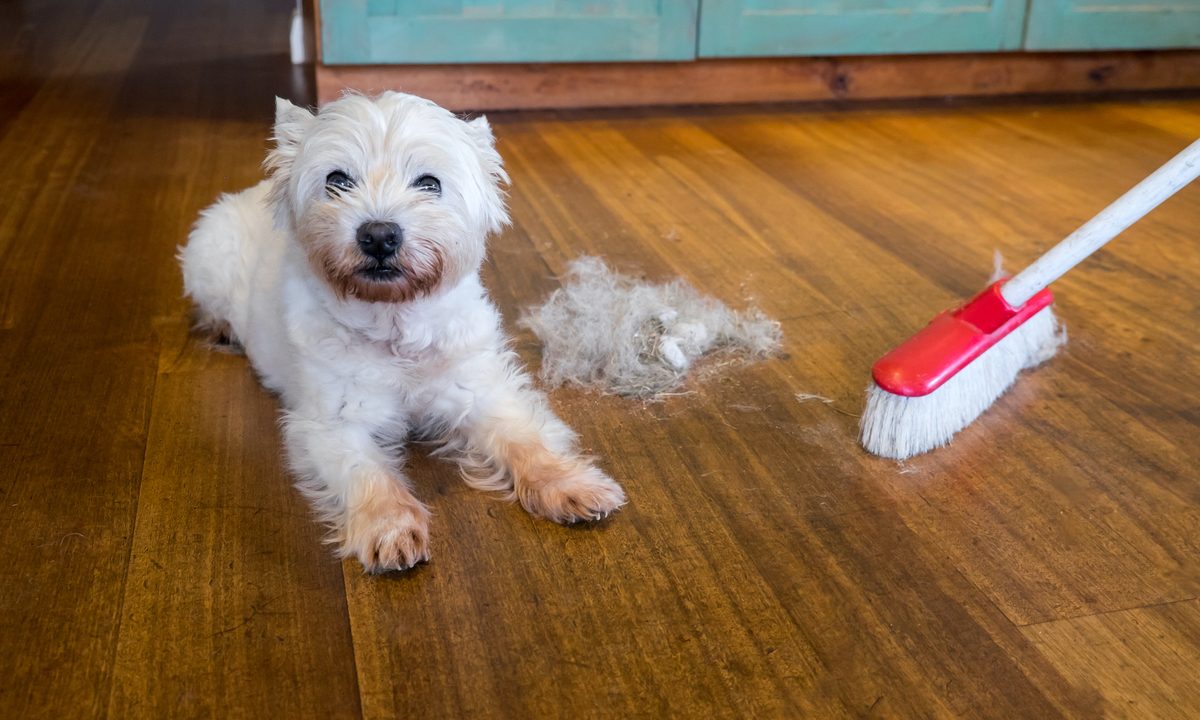If you find yourself asking other pet parents, your vet, or even Dr. Google questions like, “Why is my dog shedding so much?” or “How can I reduce dog shedding?” — this one’s for you. We’ve got all the answers and information you need to make sure everything is A-OK when it comes to your dog’s coat. We’ve even uncovered a few ways to make your pup’s shedding easier on you since, whether you want it or not — shed happens!
From preventive measures to easy cleanup methods, you can do a lot to make shedding as bearable as possible. Don’t be afraid of some trial and error, as different methods work best for different homes. You’ll get to the bottom of it. When in doubt, you can always ask your veterinarian, dog groomer, or even other dog owners for their best dog shedding tips.
Why is my dog shedding so much?
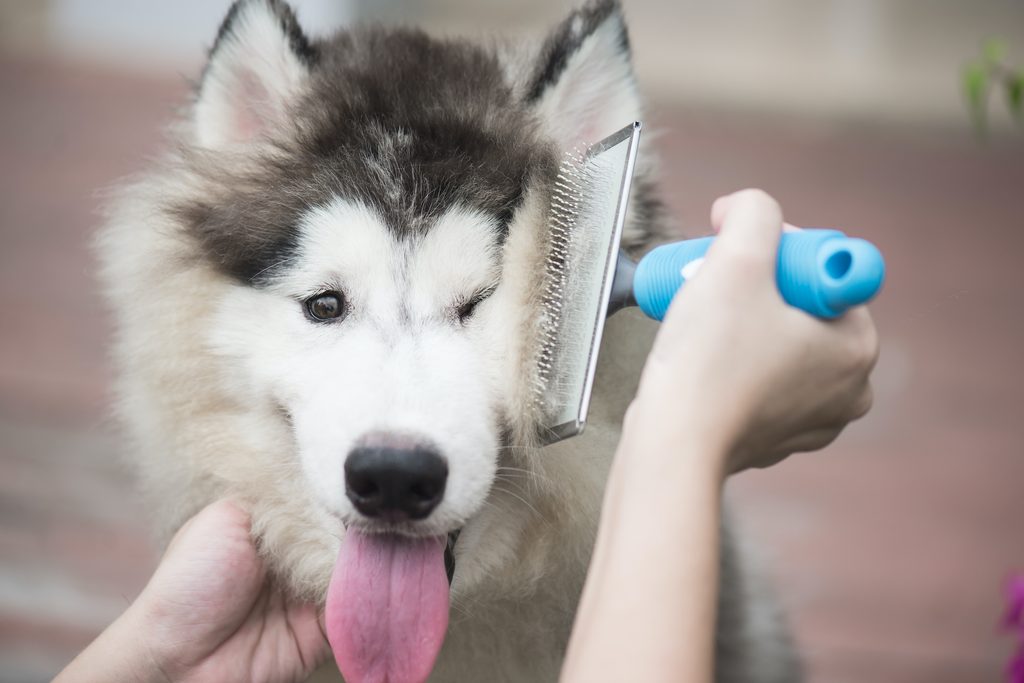
Dogs grow and shed fur to regulate their body temperature throughout the year. In the springtime, pups in most climates lose the thick extra fur that came in over winter, so you may notice extra shedding during this time.
Skin allergies are a common reason dogs lose excess fur, especially if they suffer from other allergic symptoms. You might notice skin redness or excessive itching, which lets you know it’s time to visit the vet or reinvent your dog’s antihistamine regimen.
Hormone problems, parasites, fungal infections, and other causes of skin inflammation can also contribute to hair loss. Anything that causes your dog to scratch her skin will also lead to some shedding, though your trusted vet should examine unexplained itchiness.
Ways to reduce dog shedding
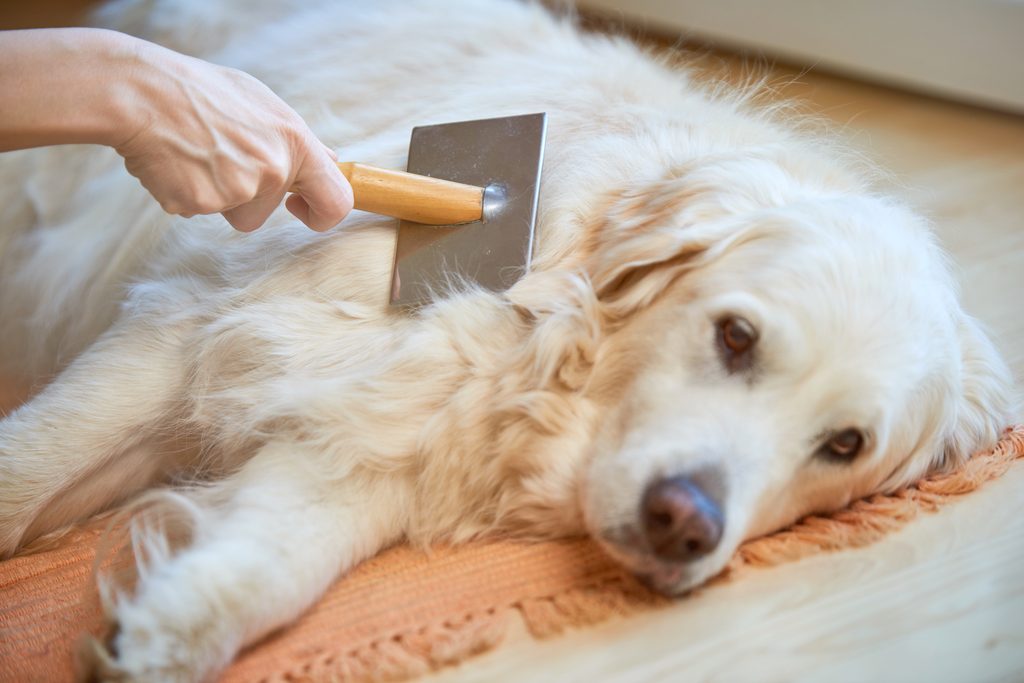
Fortunately, there are many strategies pet parents can use to tackle excess shedding, from keeping the home clean to tackling the problem at the source itself.
Routine brushing
Dogs who shed aren’t as prone to tangles as other dogs, though brushing can help them regulate their shedding and coat health. Different breeds have different grooming needs depending on their coat types, so you may have to do some research before finding the perfect brush for you. Common helpful brushes include:
- Currycomb: This helps stimulate the skin and remove loose hair on short-coated dogs.
- Slicker brush: These fine wires help remove tangles and debris from the fur.
- Bristle brush: This is a useful tool for almost any coat type, though longer fur may require long, stiff bristles.
Special de-shedding tools may also be helpful for dogs with multiple layers of long or thick fur.
Proper food and water intake
Dehydration leads to dry skin, and dry skin leads to fur loss. Keeping an eye on your dog’s water intake is a good idea if you notice anything amiss. A lack of vitamins can be another cause of unhealthy hair follicles, so you may want to double-check that your pet is on the best, nutrient-rich diet for her.
Regular bathing and de-shedding treatments
Bathing your dog — even just with warm water and gentle canine soap — helps remove dead skin cells and fur from her coat. Don’t forget to give her a good brushing once she’s dry! In many cases, this will cause your dog to lose this unneeded fur during and shortly after her bath, but it will reduce shedding in the long term.
You can up the ante by investing in a deshedding shampoo and conditioner for your dog. Typically, these products work by hydrating your pup’s skin and rebuilding healthy, working hair follicles. This will be especially useful for dogs with thicker undercoats since brushing alone may not be enough.
Ways to manage heavy shedding
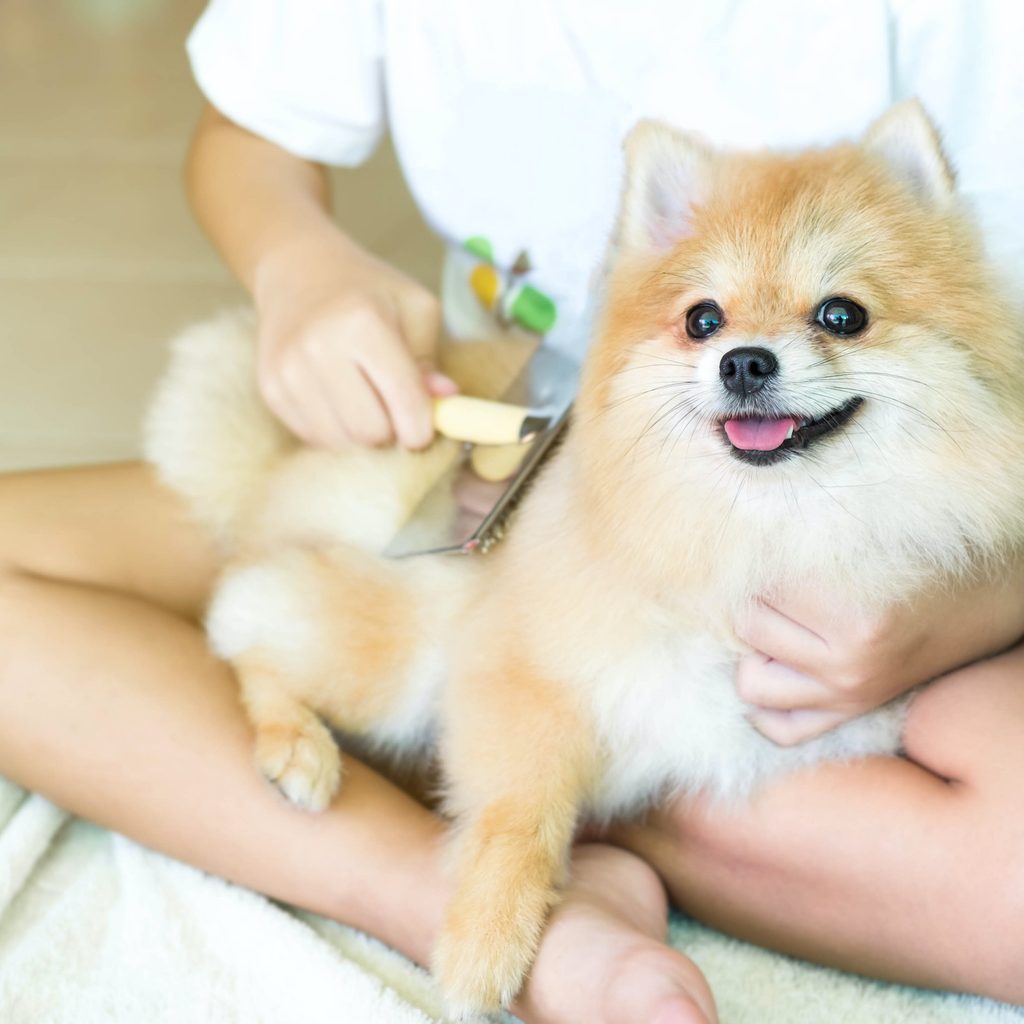
Whether excessive shedding is something you’re dealing with for now or something to get used to for the future, you can utilize a few strategies to make the process a little less stressful.
- Training is a great skill for any dog to practice, but it can also help keep the fur monster from hogging your favorite sofa. A simple “down” or “off” can go a long way. Using commands can also help when it comes to bathing or brushing your dog, especially if she tends to be rambunctious.
- There are pet-hair-repellent varieties of laundry detergent and dryer sheets, which can help keep your clothes from getting covered in doggie glitter (that’s fur). Mop pads meant for pet hair can also be super effective in cleaning your home, as can regular vacuuming. If you can invest in a vacuum that specializes in removing pet hair, that would be even better!
Protect your home from heavy shedding
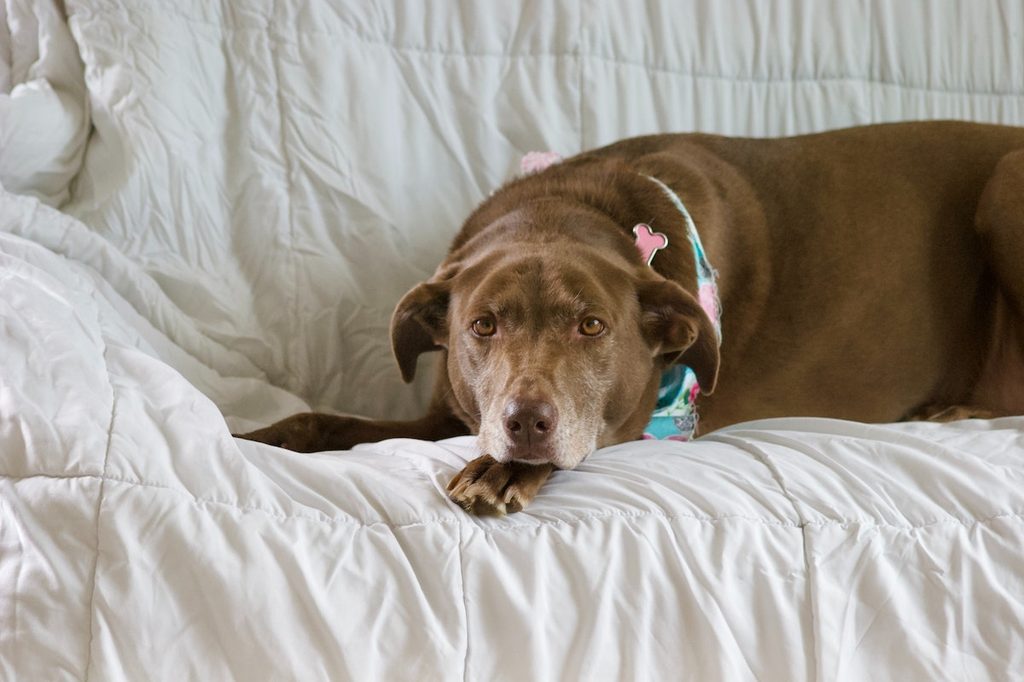
Until you have a heavy-shedding dog, you don’t truly realize how much of your home becomes covered in fur. This can become overwhelming in a matter of days, but a few easy tips will have you stressing less and less every time shedding season comes around.
Investing in a vacuum that specializes in sucking up pet hair is a great start, but finding one with a HEPA filter will ensure that you get every last strand. It can also help reduce allergens from pet dander in your home! As for surfaces and furniture, using either a latex glove or a damp cloth will be your best bet at removing all that pesky pet hair.
If your dog enjoys napping on your bed, try using pet-hair-resistant bed sheets and blankets to keep fur on the floor instead. For sofas, you can invest in a number of cute, pet-safe couch covers that are both easy to wash and easy on the eyes.
Whether you try out some new cleaning methods (for your home or your dog) or invest in a new diet for your pet, there are plenty of lifestyle changes you can make to combat heavy shedding. Don’t forget that your veterinarian can always guide you if you’re unsure of which direction to take. You never know what dog shedding tips might be the answer you were looking for!
